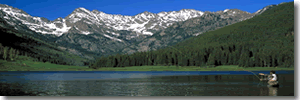Alaska Fly Fishing
Alaska is a Fly Fisherman’s Heaven
The techniques used in Alaska fly fishing for salmon and trout often depart considerably from tactics used elsewhere, so basically first time fly fishermen in Alaska are on an equal footing with more experienced “lower 48” fisherman. With the exception of king salmon, most Alaska fly fishing for red, silver, pink and chum salmon as well for steel head and rainbow trout can be done with a 7–9 weight rod and matching reel. For king salmon a 10–11 weight slow action rod and a stout reel capable of holding 150 yards of backing is recommended.

As for Alaska fly fishing line, a floating line, or sink tip line with 1x–3x tippets can handle most fly fishing conditions. For sockeye or red salmon some lead core line or split shot is helpful depending on the water conditions. Most fly fishing for the important salmon and trout species in Alaska usually involves sinking presentations. That doesn’t mean you should leave your dry flies at home.In certain conditions when fishing for silver salmon, grayling, or trout dry flies fished with floating lines and long leaders can be highly successful.
Alaska Fly Fishing Licenses and Fees:
A sport fishing license is required annually (each calendar year) and must be in the possession of all persons 16 years of age or older (see following special exemption) while sport fishing, personal use fishing, and/or digging clams or harvesting shellfish. A sport fishing license is not required of a resident who is 60 years of age or older; a special permanent identification card is distributed by the ADF&G Licensing Section. Licenses may be purchased from any ADF&G license agent (most sporting goods stores) throughout the state, or by mail from: Alaska Department of Fish & Game, Licensing Section, P.O.Box 25525, Juneau, Alaska 99802–5525, (907) 465–2376. Or you can apply for a license through Alaska Dept. of Fish & Game at their License Application Form page on the internet.
The Fish:
King Salmon (Chinook), Silver Salmon (Coho), Red Salmon (Sockeye), Pink Salmon (Humpies), and Chum Salmon (Dog) are the five species of salmon. Rainbow and Cutthroat trout, Dolly Varden and Grayling are the most common freshwater fishes. Halibut, Ling Cod, Pacific Cod, Red Snapper (Yellow Eye Snapper) and are just a few of the many species of bottom fish you could catch on an ocean charter. (Many have actually been caught on a fly.)
Sportfishing:
Huge runs of salmon migrate from the open ocean, around Prince of Wales Island, and into the protected waters of the Inside passage near Ketchikan. This mass gathering of five species of salmon is the reason that this area is known as the “Salmon capitol of the world”. This region of Alaska is particularly noted for its strong runs of trophy fish. The finest salt water fishing for giant halibut, red snapper, ling cod, and rock cod is also available.
Fly Fishing By Air:
Anglers in any region of the state can reach remote streams, lakes, and shores by air, but planes are needed for getting around all over Alaska. Fly-in trips can be for a day; they can also involve staying at a wilderness lodge. Simple and elaborate fishing packages can be arranged.




